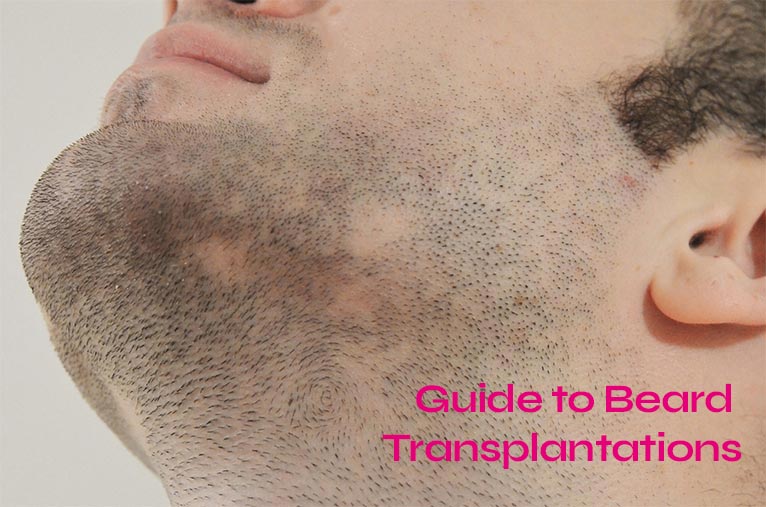Although some people like a clean-shaven look, most men prefer to grow a thick beard that is styled and trimmed. Their partners agree too. Both men and women find beards attractive and think that a man with stubble or facial hair appears stronger, healthier, and more virile. It is no wonder that most men desire to have a well-shaped and healthy-looking beard.
Unfortunately, most men cannot grow even and thick beards on their faces. It usually grows in patches, or when it does grow evenly, it is not thick enough to try various hipster styles. Thankfully, beard transplantations work just the way hair transplants do.
In this article, we take a look at what beard transplants are, how they are done, and if they are a good option for you. WhatsApp us to know more about the cost
A quick look at why everyone loves a good beard
- Beard is a sign of virility and manliness
- Men with beards appear stronger and healthier
- Take regular showers and wear cotton clothes. Avoid synthetic and other manmade clothing materials.
- Both men and women find men with stylish beards attractive
- Beards project an image of power and authority
- Beards hide scars that cannot be altered or removed
- Beards also help improve the appearance of your face, by making your features look sharper
What is beard transplantation?
Beard transplantation allows a certain procedure, but it may vary depending on individual circumstances. In general, the surgeon first harvests the hair from the donor area. Next, the surgeon performs the implantation. Finally, recovery is monitored and supervised by caregivers so that everything goes according to plan.
Reminder: It is important to understand that the skin that covers your face is different from the skin on your scalp. As a result, hair transplantations work differently on your scalp and face.
Here are the three steps of beard transplantation in detail:
1. Harvesting
The surgeon initially determines from which part of your body to harvest the hair follicles. In some cases, it might an area under the chin. In other cases, the surgeon may decide to harvest hair follicles from the back of your head. To do this, the donor site is carefully marked and shaved. This ensures that the surgeon can easily remove the tissue containing the hair follicles. After this, you will be administered local anesthesia to numb the donor site. This eliminates any pain or discomfort you may feel during the procedure. Once harvesting is completed, our team of experts will dissect the tissue into parts that contain hair follicles, also known as grafts. These grafts may contain one or two hair follicles. For beard transplantation, most surgeons use grafts with two hair follicles.
2. Implantation
The second step consists of the actual implantation of the harvested grafts. As beard grows differently than hair does on the scalp, our skincare experts use aesthetic sense to control the distribution of the grafts. They meticulously implant the grafts so that when the beard grows back, it appears naturally virile and thick. At RSB Wellness, we meticulously perform beard transplantation as facial hair needs to look as perfect as it can get. We first inject local anesthesia into the target area of your face. Once the anesthesia takes effect, we implant the grafts onto your facial skin. It is important to note that we always agree on the beard shape before the surgery commences. Thus, it is always a consultative process between the patient and the transplantation surgeon.
3. Recovery
The second step consists of the actual implantation of the harvested grafts. As beard grows differently than hair does on the scalp, our skincare experts use aesthetic sense to control the distribution of the grafts. They meticulously implant the grafts so that when the beard grows back, it appears naturally virile and thick. At RSB Wellness, we meticulously perform beard transplantation as facial hair needs to look as perfect as it can get. We first inject local anesthesia into the target area of your face. Once the anesthesia takes effect, we implant the grafts onto your facial skin. It is important to note that we always agree on the beard shape before the surgery commences. Thus, it is always a consultative process between the patient and the transplantation surgeon.
How about sideburns and eyebrows?
Visit our salon for a beard transplantation consultation
FAQs
How long do beard transplants last?
To get the ideal beard pattern and a completely natural appearance, depends on the individual patient. About two weeks following the operation, the hairs will first start to fall out. This shedding is normal and will not have an effect on long-term growth.
Is it a good idea to transplant a beard?
Beard transplants are the most efficient approach to stimulate facial hair growth, with years of results that have been demonstrated. Your own hair is used to provide realistic effects. Additionally, the recovery period and surgical procedure are both rather rapid and largely painless.
Can we shave after getting a new beard?
After your beard transplant operation, we don’t advise shaving for at least 10 days. You’ll need to be very gentle the first few times due to the possibility that your face will initially be red, painful, or swollen.

